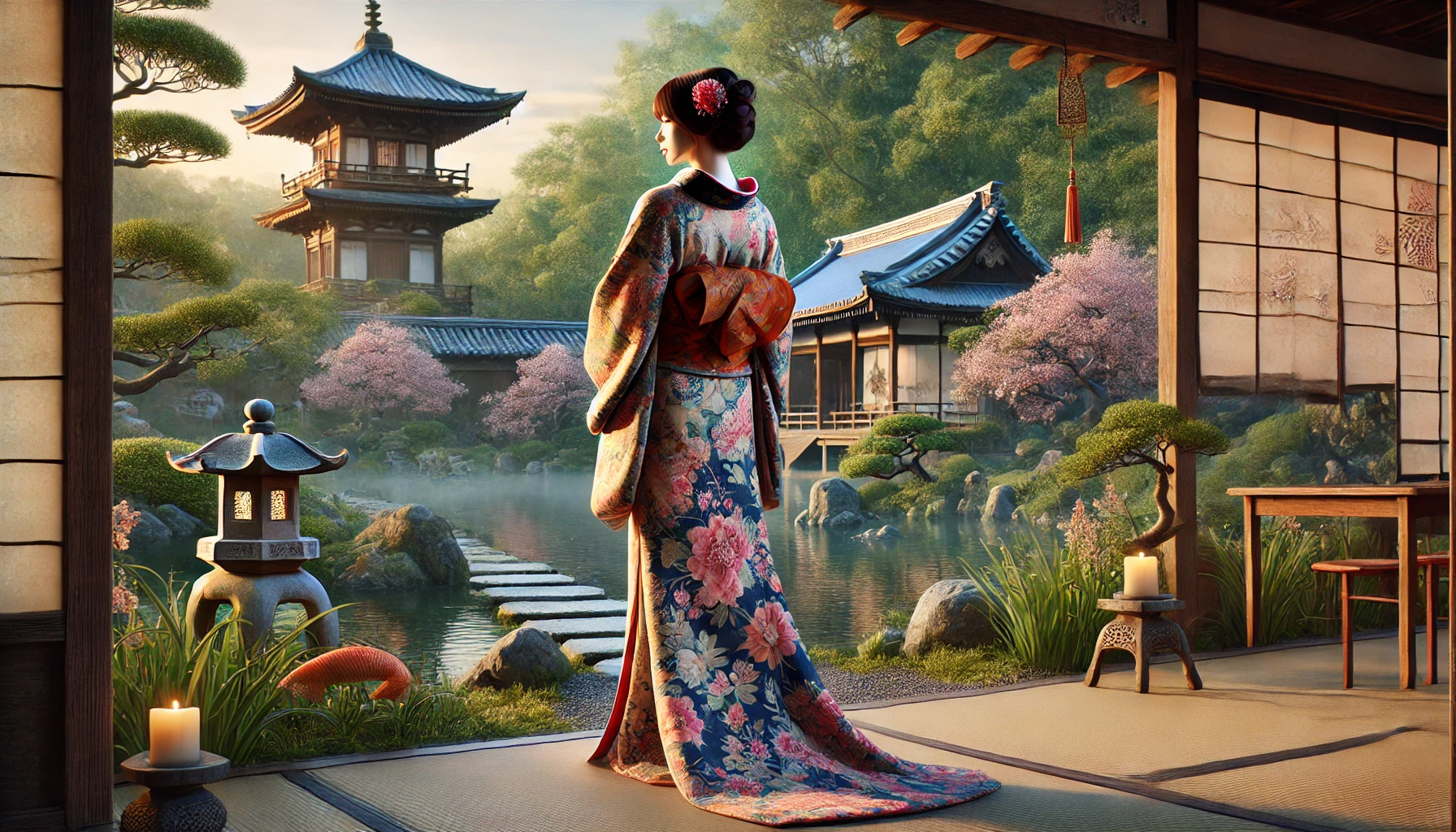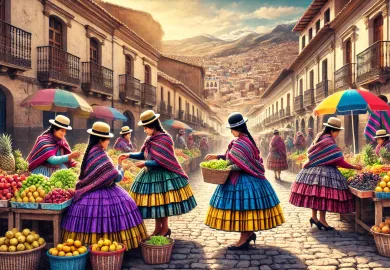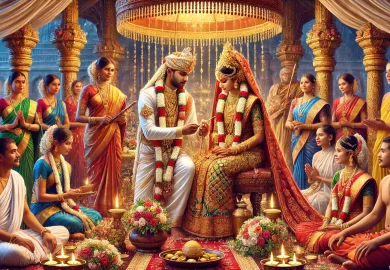
The kimono is not just a piece of clothing; it is a symbol of Japan’s rich cultural heritage, steeped in centuries of history, tradition, and artistry. Recognized globally for its elegance and distinctive style, the traditional Japanese kimono tells a fascinating story about the country’s past, its people, and its evolving fashion landscape. In this article, we will explore the historical roots of the kimono, its different styles and forms, the significance it holds in modern Japan, and its influence on global fashion.
The Historical Evolution of the Kimono
The kimono, as we know it today, has a long and intricate history that dates back over a thousand years. Its origins can be traced to the Heian period (794–1185), a time when the Japanese court introduced elaborate clothing made from Chinese influences. During this era, kimonos were worn by both men and women, but the styles varied greatly depending on social class, profession, and occasion.
Initially, the word “kimono” simply meant “thing to wear” (ki: wear, mono: thing), and the garment underwent several transformations over the centuries. During the Heian period, the kimono was called “kosode,” a garment with short sleeves that eventually evolved into a layered outfit. By the Edo period (1603–1868), the kimono had become a standardized garment, particularly among the samurai class, who used it as an expression of status and social hierarchy.
The Meiji Restoration in the late 19th century marked the beginning of Japan’s modernization, and Western influences began to penetrate the country’s fashion. However, the kimono persisted as a symbol of Japanese identity, especially in formal ceremonies and traditional arts. Today, while Western-style clothing is prevalent in Japan, the kimono remains a cherished garment worn during important events such as weddings, tea ceremonies, and festivals.
Different Types of Kimono and Their Cultural Significance
The traditional kimono is not a one-size-fits-all garment; it comes in various types, each serving a specific purpose and occasion. The type of kimono one wears can signify a person’s marital status, age, and even the season. Below are some of the most popular types of kimono that are still worn today.
Furisode: The Kimono for Unmarried Women
One of the most iconic types of kimono is the furisode, which is known for its long, flowing sleeves that can extend up to 110 centimeters. Traditionally worn by young, unmarried women, the furisode is considered one of the most formal kimonos. It is often made from brightly colored silk and adorned with elaborate patterns such as flowers, cranes, or other motifs that symbolize good fortune and happiness.
The furisode is typically worn during special events such as Coming of Age Day (Seijin no Hi), weddings (if the woman is single), and other formal occasions. Its extravagant design and vibrant colors not only signify youth and elegance but also communicate the wearer’s availability for marriage. Once a woman gets married, she generally transitions to wearing more subdued kimono styles with shorter sleeves.
Tomesode: The Kimono for Married Women
While furisode is reserved for unmarried women, the tomesode is traditionally worn by married women, particularly during formal occasions. Tomesode kimonos are usually more understated in color, often featuring black as the base, with intricate designs concentrated around the hem. The patterns typically include motifs that represent prosperity and good fortune, such as cranes or waves, but they are less flashy than those found on furisode.
Tomesode kimonos are frequently worn by married women attending weddings, especially by the mothers of the bride or groom. They come in two types: kurotomesode (black tomesode) and irotomesode (colored tomesode). The kurotomesode is considered the most formal version and is often reserved for very prestigious events, while irotomesode is slightly less formal but still elegant.
Yukata: The Casual Summer Kimono
In contrast to the formality of the furisode and tomesode, the yukata is a casual, lightweight kimono that is typically worn during the hot summer months. Made from cotton rather than silk, the yukata is popular for summer festivals, fireworks displays, and relaxing at traditional inns (ryokan). It is less intricate in design, with simple patterns and easy-to-wear styles, making it a favorite among both men and women for casual outings.
The yukata is an integral part of Japan’s summer culture and is widely associated with seasonal celebrations such as the Obon Festival or Tanabata. The simplicity of the yukata allows for more freedom in movement, and it’s typically paired with simple accessories like wooden sandals (geta) and a fabric sash (obi). While the yukata was once mainly worn after bathing, it has evolved into a fashionable garment for social events during the warmer months.
The Art of Wearing a Kimono: Layers, Techniques, and Accessories
Wearing a kimono is much more complex than simply slipping into a robe. It involves a meticulous layering process, precise techniques, and the use of various accessories that help create a polished, complete look. The art of wearing a kimono, also known as “kitsuke,” requires training and practice, as each element must be worn correctly to ensure that the kimono drapes elegantly on the body.
Layers and Fabrics
A standard kimono is made from rectangular pieces of fabric sewn together, and it usually consists of several layers. For formal occasions, multiple layers of clothing may be worn underneath the kimono itself, including a nagajuban, which is a type of undergarment that protects the outer kimono from sweat and oils. The fabric of the kimono can vary from silk, which is considered the most luxurious and formal material, to cotton or wool, which are used for casual kimonos like the yukata.
The Obi and Other Accessories
One of the most important elements of the kimono is the obi, a wide sash that wraps around the waist and ties at the back. The obi not only secures the kimono in place but also serves as a focal point for decoration. Different types of obi are used depending on the formality of the kimono and the occasion, ranging from simple, flat designs for casual wear to elaborate knots and folds for formal events.
In addition to the obi, there are numerous other accessories used to complete the kimono look. These include zori (formal sandals), geta (wooden clogs for casual wear), and tabi (split-toe socks). Women often complement their kimono with kanzashi hairpins and other decorative hairpieces, while men may wear simple wooden combs or other traditional accessories.
Seasonal and Occasion-Based Dressing
The kimono is not just a garment; it is a reflection of the seasons and the occasion for which it is worn. Traditionally, Japanese people observe seasonal changes through their clothing, and the kimono is designed to align with these shifts. For instance, in spring, kimonos adorned with cherry blossoms and light pastel colors are common, while in autumn, more earthy tones and patterns featuring maple leaves or chrysanthemums are popular.
The type of event also plays a crucial role in determining the style and formality of the kimono. Formal events, such as weddings or tea ceremonies, require specific styles and accessories, while casual outings allow for simpler designs and fewer layers. The harmony between the kimono’s colors, patterns, and season is a key aspect of traditional Japanese aesthetics.
The Modern Role of the Kimono in Japanese Society
In contemporary Japan, the kimono is no longer everyday attire for most people, yet it continues to play an important role in Japanese culture, especially during significant life events and traditional ceremonies. The kimono has transformed from a daily necessity to a symbol of cultural heritage, worn during special occasions and formal events.
Weddings and Ceremonial Events
Weddings remain one of the most common occasions where kimonos are worn, particularly by the bride and her family. For these special events, the bride may wear a pure white kimono known as shiromuku, which symbolizes purity and the start of a new life. Guests, especially close family members, often wear formal tomesode or furisode, depending on their marital status.
Aside from weddings, the kimono is also worn during other ceremonial occasions such as tea ceremonies (sado), funerals, and graduation ceremonies. During these events, the kimono’s symbolism goes beyond fashion; it represents a deep respect for tradition and the gravity of the occasion.
Kimono in Popular Culture and Fashion
The kimono has made a significant impact on modern fashion, both in Japan and internationally. In recent years, designers have reinterpreted the traditional kimono, blending it with Western-style clothing to create new, contemporary looks. Fashion brands and designers have incorporated kimono-inspired elements into their collections, influencing everything from high fashion runways to streetwear.
In Japan, there is also a growing trend of “kimono revival,” where younger generations are rediscovering the beauty of traditional clothing and choosing to wear kimonos not just for formal events, but also for casual outings and social media posts. The rise of kimono rental shops has made it easier for people to experience wearing kimonos without the expense of purchasing one, allowing both locals and tourists to enjoy this cultural tradition.
The Global Influence of the Kimono
The kimono’s influence extends far beyond Japan’s borders. As Japanese culture has become more globalized, the kimono has found its way into the international fashion scene. High-profile designers like Yohji Yamamoto and Issey Miyake have incorporated elements of traditional Japanese clothing into their designs, while brands like Louis Vuitton and Gucci have featured kimono-inspired pieces in their collections.
Moreover, the kimono has become a symbol of Japan’s soft power, influencing art, film, and even cosplay culture. In recent years, Western celebrities have been seen wearing kimono-inspired garments on red carpets, further cementing the garment’s place in the global fashion lexicon.
Conclusion: The Enduring Legacy of the Kimono
The traditional kimono is far more than just a piece of clothing—it is a timeless symbol of Japan’s cultural identity, artistry, and history. From its early beginnings in the Heian period to its continued relevance in modern society, the kimono has evolved while maintaining its deep-rooted connection to Japan’s aesthetic principles and customs. Whether worn during a formal ceremony, a summer festival, or as part of a fashion statement, the kimono continues to captivate and inspire both in Japan and across the globe.
As Japan moves further into the 21st century, the kimono remains a cherished garment, symbolizing a rich heritage that continues to thrive in a rapidly changing world. Its intricate designs, symbolic meanings, and cultural significance make the kimono a truly unique and enduring element of Japanese fashion and identity.








